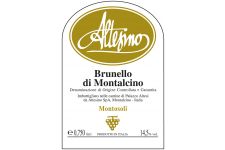
Altesino
Altesino
Biography
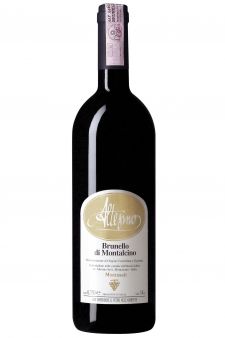
Created in 1972, the Altesino estate extends over a surface of 175 acres (90 of which vineyards) in the township of Montalcino. The estate consists of four different holdings: Altesino, Velona, Pianezzine, and Montosoli, and is headquartered in the eastern hills of the appellation, in the 15th century Altesi Palace, edified by the noble Tricerchi family. Here as well are the aging cellars and, below ground, the area where the grapes are fermented. Since 2002, the property, now as in the past directed by Claudio Basla, belongs to Elisabetta Gnudi Angelini, who purchased it as, historically, the most innovative estate of Montalcino. In its first thirty years of life it was, in fact, a forge for path-breaking ideas: the first to introduce the concept of cru to the territory, placing proudly on the labels the name of Montosoli, its finest vineyard, the first to experiment with small oak barrels in 1979, the first to create an estate grappa in 1977, beginning a period of collaboration with distiller Gioacchino Nannoni, the first to market futures of Brunello di Montalcino with the 1985 vintage, introducing certificates of future purchases for those who wished to reserve the bottles.
The largest part of the Altesino production comes from the fermentation of Sangiovese grapes, entirely on their own for the Brunello, the Rosso di Montalcino, and for Palazzo Altesi (which differentiates itself by special fermentation techniques, not used for the other wines). The Sangiovese, instead, is blended with Cabernet and Merlot for two other wines, the Rosso Altesino and the Alte di Altesi, less strictly tied to the typical character of the appellation. The pride of the estate, however, is the Brunello di Montalcino produced from the grapes of a vineyard of 12.5 acres in the northern part of the township, situated at an altitude of 1150 feet above sea level: this is the Brunello cru of the Montosoli vineyard, bottled only in the finest vintages (in other vintages it is blended with the other wines and used for the regular Brunello bottling). On different occasions the “Wine Spectator” has selected this wine as among the top 100 of the world.
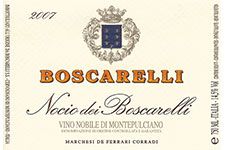
Boscarelli
Boscarelli
Biography

Boscarelli is a winery in Montepulciano founded in 1962 by Egidio Corradi. By producing a high quality wine, the founder intended to render homage to his birthplace, Tuscany, which he had left for Milan and Genova in order to pursue his professional activities. The hill of Cervognano is the location of this small estate which has dedicated its work to recovering the fame once enjoyed by Vino Nobile di Montepulciano; the position is in the southeastern part of the appellation, near the Valdichiana, at approximately 1000 feet above sea level. The objectives are to produce a traditional Vino Nobile of real character, and to create red wines which demonstrate the quality potential of the site and of Sangiovese. Of the overall total of 32 acres of vineyards, 28 are planted for Vino Nobile di Montepulciano, and the remaining fraction to produce Rosso di Montepulciano. There are two major wines: il Nocio dei Boscarelli is the best known. After destemming and soft pressing, the grapes ferment in small oak fermenters for ten days at temperatures between 82° and 90° Fahrenheit. The cap is pumped over in the early stages of fermentation, and the cap punched down in the later ones. Skin contact then goes forward for another ten days. After the malolactic fermentation, Nocio ages in 500 to 1000 liter casks of French Allier oak and Slavonian oak. Aging last 18 to 24 months, and a light filtration precedes bottling. Bottle aging last three to six months. It is a wine of great impact, ruby red, elegant in aroma, an ideal match to game. Vino Nobile di Montepulciano is the second important wine. The Sangiovese and Prugnolo Gentile grapes, hand picked into small packing cases, ferment in in stainless steel tanks and oak fermenters after destemming and pressing. Fermentation last one week at temperatures between 82° and 86° Fahrenheit with frequent pumping over and punching down of the cap. After the malolactic fermentation, the wine ages for 18 to 24 months in 500 to 3500 liter casks. Aging last 18 to 24 months. The wine is lightly filtered, if necessary, before bottling. Ruby red, redolent of plums, cherries, and spices, it is warm and long on the palate.
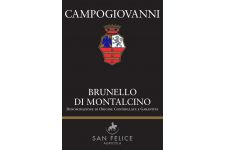
Campogiovanni
Campogiovanni
Biography
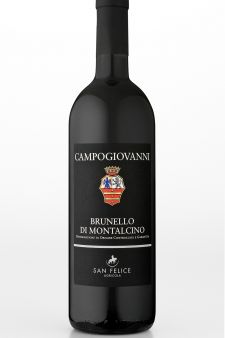
San Felice’s involvement in the Montalcino zone goes back to the early 1980s. At that time, the area of Brunello was witnessing signifi cant activity, but the area had not yet reached the world-class level of quality that it enjoys today. Our own fi rst bottles of Brunello di Montalcino were released to the market on January 1, 1985. The TENUTA CAMPOGIOVANNI is located on the southern slope of the Montalcino hill, near San Angelo in Colle. This particular area exhibits a complex of soils that produce some of the fi nest-quality Brunellos. In addition to our 20 hectares vineyards, there are 18 hectares of olive trees, woods, and fi elds, for an overall total of 65 hectares. Three separate parcels comprise the vineyards, at an elevation of approximately 300 metres. Of the 20 hectares of vines, 14 are dedicated exclusively to Brunello, and the remainder to a Rosso di Montalcino. In 1998 some Pugnitello vines were also planted. Most of the vines of Sangiovese are planted at a density of over 7,000 per hectare, trained to spurred cordon. Campogiovanni production is strongly focused on BRUNELLO and ROSSO DI MONTALCINO. 1990 saw the fi rst production of a Riserva, entitled IL QUERCIONE, made from fruit rigorously selected from the vineyard of the same name. This wine is only made in exceptional years. Campogiovanni Brunello fully merits its reputation as one of the great wines of this area. It has won, in fact, some of the most prestigious Italian and international wine awards, so much so that the 1990 and 2006 vintages were rated at the 7th and 4th place in the Wine Spectator’s “Top100’s”.






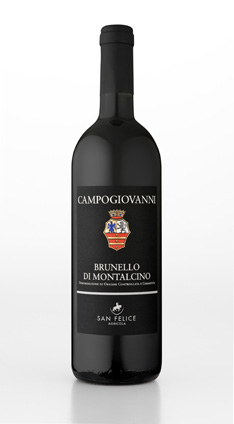
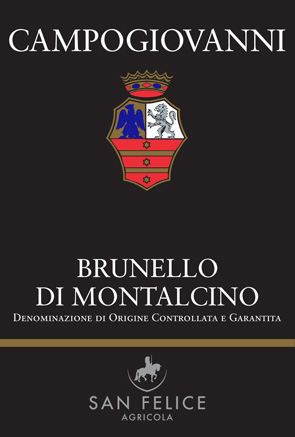

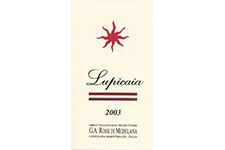
Castello del Terriccio
Castello del Terriccio
Biography
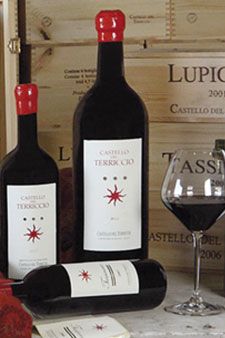
Things began to move at the Castello del Terriccio in 1975 when Gian Annibale Rossi di Medelana inherited the property. It is a very large estate with a castle, a hamlet, and many country farmhouses situated in a magnificent position in the hills of Castellina Marittima, a township on the shore of the Tyrrhenian Sea just a few miles away from Bolgheri. Rossi inherited the property from his great-uncle Serafini Ferri, who had taken in hand the estate in the first years after the Second World War, dedicating his time and energy to the cultivation of cereals; Rossi instead began to modify the crops, planting a part of the property to vineyards. Vineyards which were carefully planned and prepared before planting (with high vine density and limited production per vine) and only after a careful analysis of soil and climate. Studies which revealed that, just like nearby Bolgheri, there were real affinities with Bordeaux. Accordingly international varieties such as Cabernet Sauvignon, Merlot, and Petit Verdot substituted the local Sangiovese and Trebbiano and were an authentic revolution for Castellina Marittima. An idea and an inspiration which proved to be winning choices. The first wines were produced in 1986 and began immediately to interest both the media and connoisseurs. Lupicaia is the symbol of Terriccio, a classic Bordeaux blend (Cabernet Sauvignon, Merlot, and a touch of Petit Verdot); the Merlot and Cabernet are aged separately in barrique for 18 months and then, just as in Bordeaux, blended together in percentages which vary from year to year. The blend serves to bring out the maximum potential of the vintage and creates the possibility of producing, each year, a perfectly balanced wine, intense, supple, and, above all, long-lived. A wine which has won much recognition and many awards on an international scale. Another wine, named Castello del Terriccio, began to be produced in 2000 and is a blend of Syrah (another non-local variety which has given excellent results at Terriccio), Merlot, and other grapes. A wine which is complex, dense, and very spicy. Tassinaia rounds out the range, a Sangiovese with Merlot and PetitVerdot. But Terriccio is not solely a red wine estate, as its Rondinaia, a suave and balanced Chardonnay, demonstrates.
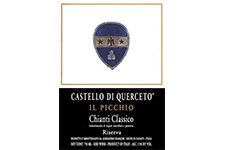
Castello di Querceto
Castello di Querceto
Biography
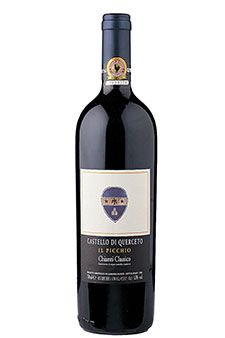
Castello di Querceto, for over a century, since long ago 1897, has belonged to the François family, of French origins, but in Tuscany since the 18th century when one of its members, a functionary of the house of the Hapsburgs of Lorrain, moved to Italy when the Grand Duchy came into their possession. The Castle is situated in the north-eastern part of Chianti Classico, in a small valley of the township of Greve in Chianti just a few miles from Florence; the vineyards and olive groves of the estate lie on the slopes of the valley at altitudes which range from 1300 to 1750 feet above sea level and are accordingly considered “high altitude”. The estate extends over 465 acres of property, 150 of which are planted to vines; the vineyards are located almost entirely around the castle and the estate headquarters, where, alongside the old estate buildings, a production unit of recent and modern construction has been erected with full respect for the tradition and the architectural style of the zone.
After two generations of activity, Alessandro François began an entirely new phase in the late 1970’s, one in which the estate was completely restructured with large investments involving both the viticulture and the transformation of the grapes into wine. Given the important expansion of the house in recent years, it was decided to plan for further development, a larger volume of production, and a rationalization of the entire production process.
Viticulture is conducted with an eye both to high quality grapes and to the ecological compatibility of cultivation practices. The philosophy of Querceto is based on the idea of maximizing character and personality through a thorough study of the characteristics of the single vineyard plots, with the aim of achieving all of the potential of the various grape varieties cultivated on the property. The most important offering is the Chianti Classico Riserva Il Picchio, 90% Sangiovese and the remaining part Canaiolo, a wine of notable structure and personality, very elegant in its impeccably Chianti style. It is an unmistakeably traditional wine, rich in noble tannins and a perfect match for red meat and game.
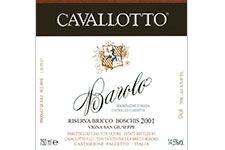
Cavallotto-Bricco Boschis
Cavallotto-Bricco Boschis
Biography
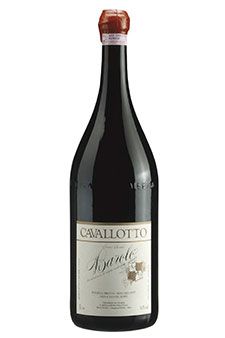
Situated at the outskirts of Castiglione Falletto in the Barolo appellation, on the Bricco Boschis hill, the Cavallotto estate extends over a surface of over 60 acres, 55 of which are planted to vineyards. The Cavallotto family are owner-cultivators for over five generations, and in 1948 brothers Olivio and Gildo Cavallotto were the first cultivators in the zone to commit themselves to the fermentation of their own grapes and the direct marketing of their own wines. Today it is Olivio’s children who run the property, using only the grapes of their own vineyards and taking maximum advantage of the many years of experience in the world of wine and the traditions of the family. The Cavallotto cellars are located amidst the vineyards of Bricco Boschis, on the eastern side, directly behind the old farmstead of the year 1800. In the central block, above ground, are located the large space for the fermentation of the grapes; here, the grapes are destemmed and pressed, then ferment and macerate in large stainless steel tanks with full control of the temperature. The aging period which follows for the Dolcetto, the Barbera, and the Barolo takes place in large casks of Slavonian oak located below the Bricco Boschis buildings in order to insure natural humidity and constant temperatures. The soil of Castiglione Falletto is particularly generous: it gives wines rich in alcohol, robust, and very long-lived. The geological characteristics of the various vineyard plots gives wines of different character in each and every parcel, though in a context of a constant search for maximum quality, the trademark of the estate. The informed use proper cellar techniques contributes to the production of important wines, first and foremost three different Barolo crus, all highly prized for their structure, ample aromas, and aging ability. Barolo Bricco Boschis, Barolo Riserva Bricco Boschis Vigna San Giuseppe, and Barolo Riserva Vignolo are considered among the top wines of Piedmont, award-winning bottles whose quality has been recognized and rewarded by a large part of the national and international wine press.
The range of estate wines, however, is a large one and includes many of the native grape varieties of Piedmont, from which Dolcetto d’Alba, Barbera d’Alba, Nebbiolo Langhe, Freisa Langhe, Grignolino Piemonte, Pinot Langhe, and Chardonnay Langhe are all produced.
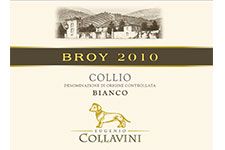
Collavini
Collavini
Biography
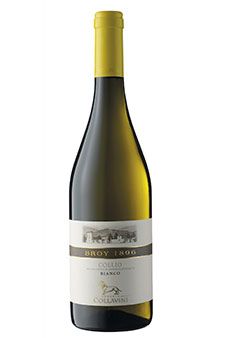
The Collavini family’s involvement in wine began in 1896, when the founder of the dynasty, Eugenio Collavini, began to supply the better families of Udine with his wines. But the magic moment in the development of the firm came in the 1970’s when his descendent, Manlio Collavini, decided to invest sizeable capital in modern and functional plants and improve both the efficiency of the cellars and the quality of the wines. The move was rewarded with immediate success thanks to Grigio, a sparkling wine from Prosecco and Chardonnay grapes which won widespread and immediate popularity. Doubled with the creation of a sparkling Ribolla Gialla. With the acquisition and renovation, in 1980, of a 16th century mansion in Corno di Rosazzo, this enterprising producer of Friuli not only found a prestigious home for his family but also cellars in which he could concentrate production. And it was then that the qualitative leap of the firm took place, with a far-reaching and comprehensive program which included long-term relationships with the supplier of grapes, and modernization of the cellar technology based on soft pressing and temperature-controlled fermentation. Currently, with 430 acres of proprietary vineyards and an annual production of 1.5 million bottles, Manlio Collavini’s company is one of the most efficient and important of Friuli. This is due to the care and attention with which he has always given both to the volume wines and to the higher level offerings in his line, and to the interest which has always been given to experimentation in the cellars: not only traditional techniques, such as the drying of the grapes, but also new concepts such as the freezing of the grapes, reverse osmosis and so forth. For him, wine is much more than a drink: a conviction which has driven him, as a member of Parliament, to improve wine legislation as well. The most brilliant results, however, of his public activities have been to succeed in baptizing the streets of his home township, Corno di Rosazzo, with the name of the native grape varieties: the address of his house, in fact, is Via Ribolla Gialla. Assisted by his wife Anna and his sons Luigi and Giovanni, he also relies on the cellar work of winemaker Walter Bergnach. The finest achievement has been a white, Broy, a Collio appellation wine which blends Tocai, Chardonnay, and Sauvignon, along with two red wines: Forresco, a Collio blend of Refosco dal Peduncolo Rosso, Refosco di Faedis, and Pignolo, and Dal Pic, a Collio Merlot from one of the great international varieties.
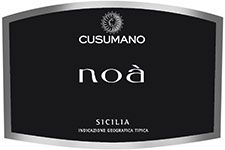
Diego Cusumano
Diego Cusumano
Biography
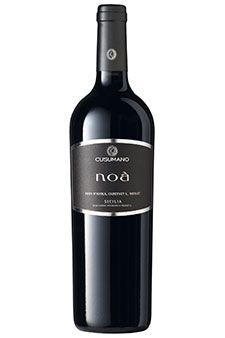
The experience of Alberto and Diego Cusumano in the field of wine is not recent history, but goes back some forty years when their father, proprietor of vat landed holdings in various parts of Sicily, produced concentrated must for export to northern Italy.
Wine itself was something which arrived later, in the 1980’s, when the Cusumano realized that the future needed to be planned and that large-scale production had little future. It was then that a process of selection began to be practiced, planting the finest clones of the traditional grape varieties of Sicily, Insolia and Nero d’Avola, and the first plantings of such international varieties as Syrah, Cabernet Sauvignon, and Chardonnay.
Truly fundamental changes only began in the mid-1990’s, when Diego and Alberto Cusumano joined the family firm. The objective of the brothers, however, was not to perpetuate the ideas of their father but to base their work on quality wine.
Dynamic entrepreneurs, Diego and Alberto work with the advantage of a very large patrimony: 1000 acres of vineyards divided among seven different estates, for the most part in the finest areas of Sicily such as Alcamo, Monreale, Partinico, Ficuzza, and Bufera, vineyards which yield an annual production of two million bottles.
Their young firm has, in a short space of time, become an important market phenomenon with a world-wide reputation stretching from Russia to the USA based a happy combination of modern technology and territorial character. One of the most representative wines, Angimbè, a blend of 70% Insolia and 30% Chardonnay, was selected by the Wine Spectator in 2004 as one of the 100 finest wines of the world and, in 2008, as one of the finest values in Italian wine.
The two crus of the house are unquestionably Noà, a blend of 40% Nero d’Avola, 30% Cabernet, and 30% Merlot, and Sàgana, 100% Nero d’Avola, both “three goblet” wines of the authoritative Gambero Rosso guide to Italian wine.
The most important objective at the moment is to create a solid image of the wines and the firm on an international level, the emblem of a Sicily of true quality. Both Diego and Alberto dedicate a large part of their time to the realization of this goal.
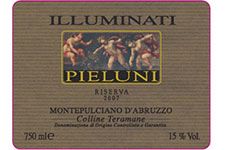
Dino Illuminati
Dino Illuminati
Biography
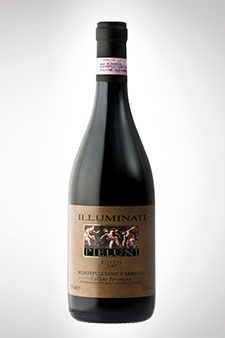
The vineyards of the Illuminati family are located between Controguerra and Neretto in the northern part of the province of Teramo, between the Apennine chain and the Adriatic Sea at an altitude of 1000 feet above sea level. At the end of the 19th century Nicola Illuminati founded the Fattoria Nicò winery, which now, a century later, is directed by his grandson Dino with the aid and assistance of wife and children. Total vineyard surface is 275 acres, with an annual production of 1.2 million bottles of fine overall quality. The story of this firm has unquestionably been a stimulus for other producers of the region, habituated until recently to the sale of their grapes to others who used them to produce blending wine for other regions in less successful vintages. Thanks to its pioneering work of the Illuminati, who developed an entire production cycle from grapes to the bottle, the oenology of the Abruzzo is well considered both in Italy and abroad. The two major crus of the house are both Montepulciano d’Abruzzo Colline Teramane Riserva DOCG, and Pieluni has been particularly appreciate and given important recognition. The harvest for this wine is a late one and is carried out by hand during the last ten days of October. The grapes are destemmed, pressed softly, and then fermented in stainless steel tanks at temperatures of 84-86° Fahrenheit. After twenty days of skin contact and at the end of the alcoholic fermentation, the wine goes through a malolactic fermentation, then racked and aged for two years in small oak barrels. After bottling it is given a further 14-15 months of bottle ageing in natural grottoes in order to bring out all of the power, structure, and complexity of its personality. The other cru is the Montepulciano d’Abruzzo Doc Riserva Zanna, produced only in superior vintages. The Zanna vineyard is situated on hills to the right of the Tronto river as it descends towards the Adriatic Sea, at 950 feet above sea level in the township of Controguerra. The local climate is mild and the grapes are trained in an overhead system with 400 vines per acre. These are among the last grapes to be picked: after a rigorous thinning of the crop and a careful selection of the bunches, the grapes are destemmed, pressed, and fermented in stainless steel tanks at a maximum temperature of 86° Fahrenheit. The wine is then racked into Slavonian oak casks for an aging period of 24-26 months.
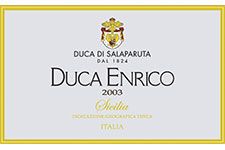
Duca di Salaparuta
Duca di Salaparuta
Biography
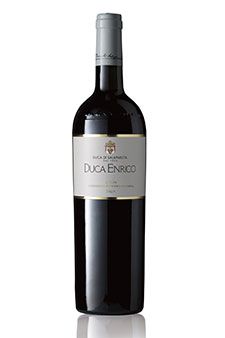
Giuseppe Alliata was prince of Villafranca and Duke of Salaparuta, but he was a man of progressive ideas. It was in 1824 that he decided to ferment the Inzolia grapes of his estate in the Corvo zone of Casteldaccia; he wished that his own personality be mirrored in the wine he intended to produce for the illustrious hosts who visited his residence of Villa Valguarnera. And thus Corvo was born, an aristocratic, non-conformist wine which soon left the salons of Sicily to compete with the major labels of its time. The challenge, to produce international-level wines with Sicilian grapes, was taken up by his son Edoardo as well, and then by his grandson Enrico. The last of these was a fascinating personality, a philosopher, a musician, a pioneer in the promotion of the Mediterranean diet. Under his guidance the winery grew, with an eye to international experiences as well. At the death of Duke Enrico, however, his daughter Topazio did not feel up to direct the property, by now of an important size, and in1961 sold it to a financial structure controlled by the regional government of Sicily, Espi, under which it achieved important success. Exactly forty years later, in May 2001, the house was sold once again: the firm was privatized, auctioned to potential purchasers. The highest bidder was the Illva Saronno through a firm it controlled in Sicily, Florio of Marsala. The strategy of Augusto Reina, CEO of Illva Saronno, was well thought-out: create a Sicilian wine powerhouse by taking advantage of the synergy between two brands, both of international level. Florio, number one in he field of Marsala and passito wines, and Duca di Salaparuta, number one in table wine on the island with two major wines in its portfolio: a red wine of the calibre of Duca Enrico, a Nero d’Avola, and a structured white wine, Bianca di Valguarnera, an Inzolia. In order to achieve his goals, Reina merged the two houses into a new company, Duca di Salaparuta S.p.A. invested 30 million euro to modernize the Duca di Salaparuta cellars at Casteldaccia and at Aspra. The key investment was for vineyards. Although producing 9 million bottles per year, the company did not own its own vineyards but purchased grapes from selected zones and cultivators. The purchase of the large Suor Marchesa property, close to 240 acres at Butera, a fine area for Neor d’Avola, and of 22 acres at Castiglione di Sicilia on the slopes of Mount Etna, with an extraordinary potential for Nerello Mascalese and Pinot Noir, are only the beginning of a program to endow Duca di Salaparuta with crus suitable to its ambitions.
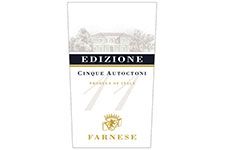
Farnese
Farnese
Biography
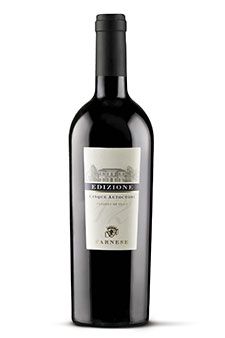
In Ortona in the Abruzzo region, Farnese is a virtual synonym for wine ever since the day, in 1538, when Margaret of Austria, married to a Farnese prince, decided to retire from court life and construct, right in this spot, the splendid Farnese palace. During this period the city lived in splendour and all of its activities received a new stimulus, in particular the cultivation of grapes; the wines were drunk at the banquets of the most important European courts. Farnese wines, a young enterprise of the region which has conquered an important role in major Italian and European markets, is the heir to this story. The firm’s headquarters is in the historic Caldora castle, constructed in the 15th century by military leader Giacomo Caldora to defend the city of Ortona and restored to the splendor of yesteryear. The mission of the house is to give deserved recognition to all of the areas and wines of the Abruzzo region; for this reason it owns vineyards both in the province of Chieti, where the white grape and Sangiovese vineyards are located, and in the province of Teramo where, in the renovated cellars in Roseto degli Abruzzi, are situated the most significant crus of Montepulciano d’Abruzzo.
A major example of the philosophy which concentrates its efforts on behalf of native grape varieties is Edizione Cinque, which blends five of these grapes to create the pride of the house. The intention was to invent a wine which expressed the millennia-old traditions of two regions where the firm has invested important resources, Abruzzo and Apulia (where Farnese is involved in Feudi di San Marzano). This “autochthonous” cru is a blend of the Montepulciano and Sangiovese of Abruzzo and the Primitivo, Negroamaro, and Malvasia Nera from Apulia. A deep garnet red, almost impenetrable in tonality, it is very intense and persistent on the nose with notes of cherries, plums, berries, tobacco, and a final toasty sensation. Large in structure, it is warm and soft on the palate with elegant and supple tannins and a long finish of spice and chocolate. Ready upon release, it can age well for another eight to ten years. Best drunk at 64-68° Fahrenheit, it goes extremely well with rich sauces, red meat, and game.
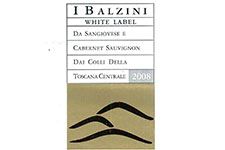
I Balzini
I Balzini
Biography
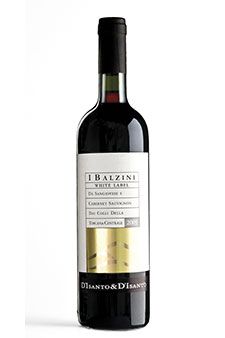
The I Balzini estate was created as an expression of the love for wine of Vincenzo and Antonella D’Isanto, professionals in their daily life, producers of wine for passion conviction. Their wine is produced with every loving care and attention. This is the spirit with which Vincenzo D’Isanto, a CPA and sommelier, has based his adventure with Antonella in the world of wine. It was his passion for red wine which led him, in 1977, to purchase 10 acres of land in Barberino Val d’Elsa in the heart of the Tuscan countryside, on the border between the provinces of Florence and Siena. In 1980 the first vineyard was planted; working with oenologist Giulio Gambelli, he produced an IGT red wine, I Balzini, wich takes its name from the terraced terrain, “balze” in Italian, on which the vines are planted. The first vintage was in 1987. The couple aims for high quality wine, and to accomplish this dedicate much care to the cultivation of the vines. Among the grape varieties utilized are Cabernet and Merlot, planted on sedimentary soils of Pliocene origin, yellow loamy sands mixed with pockets of clay and with a notable presence of marine fossils. The Sangiovese vineyards, instead, are on Eocene soils, created by the erosion of the local hard limestone rock. Among the offerings, the I BALZINI White Label, a blend of Sangiovese and Cabernet Sauvignon, is an intense, deep ruby red with complex and elegant aromas of very ripe red berry fruit along with spicy oak notes form the barrels in which the wine ages. Soft and balanced, it is long on the palate, characterful and with a territorial personality modified by the innovative presence of Cabernet Sauvignon. The I BALZINI Black Label, Sangiovese, Cabernet Sauvignon, and Merlot, is very full with a concentrated ruby red color, dense and with purple notes. The nose is complex with nuances of violets and iris along with notes of berry fruit, vanilla, coffee, dark chocolate, and leather. A firm and potent wine, it is warm on the palate, austere, and suave. Both wines are fermented in temperature-controlled stainless steel tanks and aged in small barrels of medium-toasted French oak. After bottling, the wine ages for an additional year before release.
The third wine is the I BALZINI Green Label, 80% Sangiovese and 20% Mammolo, fresh and fragrant.

Marchesi di Barolo
Marchesi di Barolo
Biography
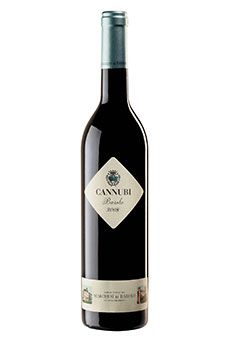
In his book “The Village of Barolo”, canon Domenico Massé wrote, as clearly and unambiguously as possible: “the creation of the type of wine which is now called Barolo must be credited to various Marquis of the Falletti family of Barolo, who produced the wine with every exacting care and attention in their extensive properties in and around Barolo”. Since the year 1929 the Marchesi di Barolo firm has belonged to the Abbona family, now in its third generation of active control of operations in the person of Ernesto Abbona and his wife Annamaria. The grand crus of the house are produced by giving the maximum attention to the matching of the various grapes which are cultivated to the proper sites, those with the most suitable soil and exposure. The objective is to bring out all of the personality and quality of the traditional varieties of Piedmont and the territory in which they are cultivated in order to magnify their unique and inimitable character. The goal is wines of great aromatic purity along with the proper balance of structure and elegance, Nebbiolo of maximum complexity and pleasure to drink.
Various wines are produced, from Dolcetto and Moscato to Freisa and Barbaresco. But the most prestigious selections are the various Barolo crus. This is confirmed by the Barolo from the Cannubi vineyard, the cellar’s most representative wine. The grapes which are utilized come exclusively from the hillsides of Cannubi, a long, slowly rising hill, a site of exceptional completeness where the two major geological formations of the zone, the Helvetian and the Tortonian, meet and mingle. The fermentation begins with a soft pressing of the hand-picked grapes followed by de-stemming and fermentation – in temperature-controlled tanks – at peak temperatures of 30-32° centigrade (86-90° Fahrenheit). The grapes macerate on their skins for ten days during the fermentation and are run off their skins when fermentation is completed. One part of the wine is aged in 3000-3500 liter casks of Slavonian and French oak. Another part ages in 60 gallon, medium-toasted French oak barrels for a period of twelve months. At the end of the aging process the wine is assembled and then aged for a final period of twelve months in bottle before commercial release. A full ruby in color, the wine offers intense aromas of roses, vanilla, liquorice, toasted oak and tobacco. Full and elegant on the palate, ample in body and austere, its flavors recall the aromas first perceived on the nose. The notes of spice and toasted oak are most pleasurably fused and integrated with the character of the wine, which is well suited for lengthy aging and can last as long as 25-30 years.
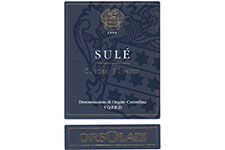
Orsolani
Orsolani
Biography
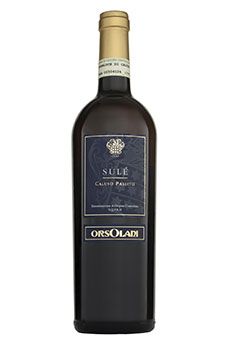
The Orsolani cellars are at San Giorgio Canavese, in the heart of the Erbaluce di Caluso production zone. The firm was founded in 1894, when Giovanni Orsolani, with his wife Domenica, decided to return from the USA, driven by a certain nostalgia for his birthplace. The great-great-grandparents of the current owner opened a restaurant, the Locanda Aurora, Domenica worked in the kitchen while Giorgio took care of the vineyards and cellar to produce wine for the customers. The wine had success and the cellar expanded, to the point that the following generation decided to dedicate its efforts to wine on a fulltime basis. Gian Francesco, the father of the current owner, Gian Luigi, revolutionized Erbaluce production in the 1960’s, dedicating much time to the ripening and fermentation of the grapes. The decisive commitment to Erbaluce came in 1967 when the wine obtained appellation status. The result of these efforts, based entirely on the search for higher quality, brought the Orsolani cellars a dominant position over the past thirty years. Beginning in 1968, with the first production of sparkling wine, a true innovation at the time, the Orsolani cellars obtained DOC status for this type of wine as well. In 1985 La Rustia was born, a wine based on careful grape selection during the harvest, and demonstrated, for the first time, the possibility of using this variety for dry white wines as well. In 1988, after some years of experimentation, barriques were used for the fermentation of the dessert version of the wine in order to reduce oxidation during aging. The result is a great dessert wine, easily comparable to others – the non-aromatic type – in Italy. In 1996 with the Vignot – San Antonio and San Cristoforo – Orsolani introduced a concept of cru not based exclusively on a single grape source but also on techniques of fermentation and aging studied expressly for a precise type of wine. At the present time, Orsolani ferments solely Erbaluce from 37 acres of vineyards, producing 100,000 bottles annually. The finest wines, produced for over twenty years from an accurate grape selection in the finest zones of the township of Caluso are: Sulè Caluso Passito DOC; La Rustia Erbaluce di Caluso DOC; Cuvée Tradizione Caluso Spumante DOC, produced wiht the classic Champagne method.
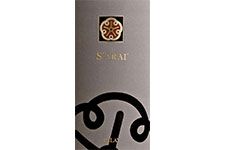
Pala
Pala
Biography
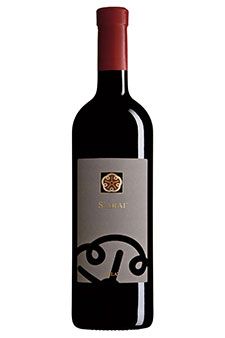
The Pala firm, founded in 1950 by Salvatore Pala, father of the current owners Enrico and Mario Pala, is currently one of the most interesting estates in Sardinia. Located less than twenty miles to the southwest of Cagliari, at Serdiana, it has acquired over time real recognition for the quality of its wines, always of high level. Recently, in early 2008, a very favourable opinion of the wines were expressed by international critic Robert Parker in the “Wine Advocate”, which defined the two crus of the cellar, S’Arai and Crabilis, “extraordinary”, and “well above average”. The scores were, respectively, 92/100 and 88/100. The philosophy of Pala aims at the production of wine which is an authentic expression of its territory: for this reason, the grapes varieties used are almost exclusively local or Sardinian, typical of their micro-areas. It was with this in mind that Essentija was created some years ago, a 100% Bovale (only Pala produces a wine purely from this grape variety), intense and persistent on the nose, warm and ample on the palate. The same philosophy informs Crabilis and Stellato, the last the more recent creation, both example of pure Sardinian Vermentino. The most prestigious wine of the firm is S’Arai, a blend of Cannonau, Carignano, Barbera Sarda, and Bovale. Each variety is fermented separately. After destemming and pressing, the wine ferments and macerates for eight to ten days, using selected yeasts and fully controlling fermentation temperatures. At the conclusion of the fermentation the wine is light is lightly fined, reposes for a few days, and then is blended with percentages which vary form vintage to vintage. After blending the wine rests for a month in cement tanks and then goes into 60 gallons French oak barrels for an eight to ten month aging period. The wine is then bottled and ages for a further three to four months. An intense ruby red in color, with a nose of ripe red fruit and almonds, the wine is firm but soft and caressing on the palate, with notes of red fruit on the finish. It is an excellent match to game, roasts, stews, and cheese.
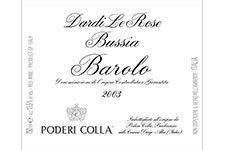
Poderi Colla
Poderi Colla
Biography
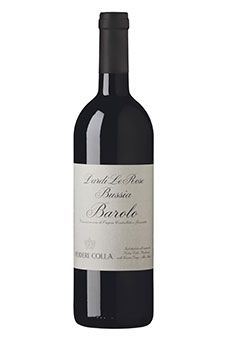
The Colla family has a long involvement in wine. The first evidence goes back to 1703, when, in a document one hears of a certain Carlo Colla of Santo Stefano Belbo who sold, in various formats, rosé wine, red wine, and white wine. Effectively speaking, the Colla have wine in their blood. Beppe Colla, for many years, was the man behind the success of one of the major wineries of Alba. In 1994, Tino Colla and his niece Federica (but with the involvement of Beppe as well) founded Poderi Colla, headquartered at Cascina Drago, near Alba at San Rocco Seno d’Elvio, one of the loveliest and most fascinating corners of the Langhe hills: though little known, it is one of the finest crus of the zone. Poderi Colla also owns vineyards at Roncaglia in the Barbaresco appellation and at Dardi Le Rose di Monforte in the Barolo DOCG. The family continues to believe in traditional wines expressive of their territory and their vintage. Not all vintages are bottled, only ones of a certain level. Large casks are used for aging in order to refine the wine and avoid dominating it, just as local tradition prescribes, and proper respect for the tradition demands. With this uncompromising philosophy, the Barolo of the Bussia dei Dardi Le Rose has the characteristic medium garnet color with brick highlights, the tannic finesse, and the full and austere structure of a wine for long aging. The Barbaresco Roncaglie is very interesting as well, characterful, long, and persistent. The Dolcetto of Piano Balbo is fragrant and immediately pleasurable. Campo Romano is a very special wine, one of the pioneering examples of Pinot Noir in Piedmont, very fragrant with typical berry aromas. Finally, and well worth mentioning, is Bricco del Drago, the first Piedmont blend of two very different wines, Nebbiolo and Dolcetto, very unusual, supple, and perfumed.
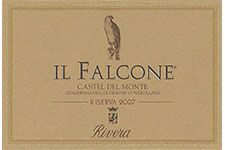
Rivera
Rivera
Biography
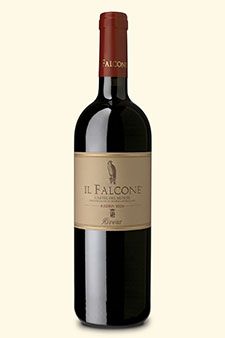
It was in the first years of the 20th century when Giuseppe de Corato decided to purchase the vast estate named Rivera in the Andria plain, one of the finest viticultural areas of northern Apulia. The vine, in fact, has been cultivated there since the days of Magna Grecia, and centuries of selection have identified native grape varieties of high potential, first and foremost Nero di Troia. But this was not de Corato’s sole impulse and inspiration: Andria and its surroundings have a fascination which goes beyond agriculture, to the point that, in the 13th century, it had bewitched even Frederic II of Swabia, the holy Roman Emperor, called for this reason “Puer Apuliae”; it is to him that we owe the construction of the Castel del Monte castle, the mysterious manor, an octagonal edifice of blonde stone which UNESCO has classified as part of the patrimony of humanity and which marks with its enigmatic presence the entire territory. Here, in the 1950’s, Sebastiano de Corato, the son of Giuseppe, founded the Rivera firm on the land purchased by his grandfather: he replanted the vineyards, restructured the old cellars, and created a bottling line. The success of the operation made Rivera a reference point for the oenology of northern Apulia. And precisely for this position of leadership, in the following years, when Sebastiano de Corato was joined by his son Carlo, the house was able to innovate in a way which rendered the viticulture and wine of the region less provincial: noble international grape varieties were planted in the vineyards, both Sauvignon and Chardonnay. Only long and patient work was able to verify the adaptability of these grapes to the local soil and climate, but the final effect was to enrich the viticultural possibilities of the region. Today Rivera gives greater emphasis to native grape varieties, and for this reason has re-launched Nero di Troia, for too long a time a greatly undervalued variety. The two most representative wines from the grape are red wines, both Castel del Monte DOC efforts: Il Falcone represents part of the story of the house, a Riserva wine produced ever since 1950, a blend of Montepulciano and Nero di Troia which reflects the local tradition of that period in time. Puer Apuliae, instead, a relatively recent wine, was first made in 2000 and is a pioneering effort in the creation of high level pure Nero di Troia. It is with wines of this type, produced from close to 240 acres of proprietary vineyards, that Carlo de Corato, now supported by his son Sebastiano who has joined him in the firm, has prepared himself for the challenges of the global markets of the third millennium.
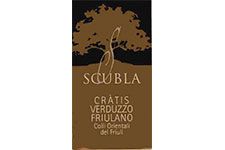
Scubla
Scubla
Biography
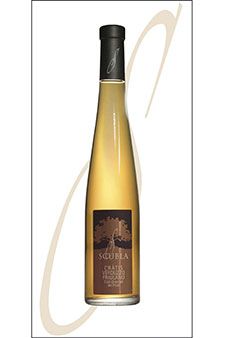
Roberto Scubla’s estate was founded in 1991 at Ipplis di Premariacco in the Colli Orientali of Friuli appellation. The founder decided to add new vineyards to the older ones which already existed, reaching an overall total of thirty acres of vines. The vineyards are all situated on the slopes of a sunny, rolling hillside in the southern part of the Colli Orientali DOC, an area of wines of great harmony and fragrance. It is the soil, together with technology and human experience and know-how which characterizes the zone and its wines. It consists almost entire of a marl known locally as “ponca”, rich in micro-elements and salts, which easily flakes under the influence of sun and rain. Thanks to this marl, the grapes can express all that they have, their varietal character, their rich aromas, and their body. The limited production enables the estate to give maximum attention and care to each and every phase of operations, from the harvest to the fermentation; in this way Scubla has managed to reach his objective of offering the public quality in all of his wines, both the regular bottlings to the more prestigious offerings, both produced with the same commitment and dedication. Three Scubla wines are the most famous, a red and two whites, each of great personality. The Rosso Scuro, a Colli Orientali DOC which blends Merlot and Cabernet Sauvignon, is an intense ruby red with aromas of red fruit and spice, full and ample in body, long and velvety; it is excellent with important meat dishes and game. The Bianco Pomedes, also an appellation wine, blends Pinot Blanc with smaller percentages of Tocai Friulano and Riesling, and is fermented and aged in oak. A complex and fragrant wine. A straw yellow with golden highlights, it is ample on the nose, fruity and aromatic, tasty and structured in flavor and fine with fish. The Verduzzo Friulano Cratis, Colli Orientali DOC, perhaps the most unusual wine of the estate, is made from grapes dried on straw mats, pressed and then fermented in French oak barriques. Amber in color, sweet and concentrated with notes of dried apricots, figs, nuts, and citrus fruit, it is suave and inviting on the palate and very long. It goes well with blue cheese, even if it is an excellent wine for sipping and meditation as well.
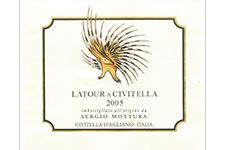
Sergio Mottura
Sergio Mottura
Biography
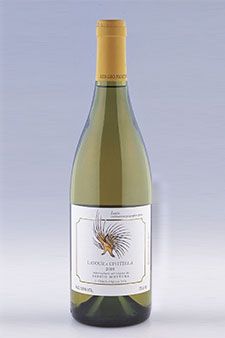
The Mottura estate, owned by the Mottura family since 1933, extends over 325 total acres in an area rich in natural resources located between the hillsides and clay erosion furrows of Civitella d’Agliano and the plain of Umbria, watered by the Tiber river not far from the city of Orvieto. The viticultural potential of the zone was already noted in 1292, when the cadastral registers of Orvieto defined it is one of the finest for the production of the famed wine of the city. The process of modernization and transformation of the estate began in the 1960’s, sharecropping giving way to the use of salaried manpower, research intensifying in order to identify the plots to be cultivated with grapes capable of giving products of real quality. Operating with this philosophy, the primary objective was to give special attention to local grape varieties, particularly Grechetto, and to work with the methods and criteria of biological agriculture, as has been done for the last fourteen years.
There are other varieties, however, cultivated in addition to Grechetto, three clones of which have been identified on the estate, grapes with rich, heady, and persistent aromas, vigorous and ample in body: Procanico, a variety with well spaced berries on its bunches, very resistant to mould, golden in color, and low-yielding; Verdello, with a compact bunch of dark green color, excellent acidity, and an elegant fragrance; Drupeggio, floral in aroma and velvety in body; Chardonnay, used for a classic sparkling wine; Merlot, Montepulciano, and Pinot Noir, red grapes which often find here ideal conditions for important wines. It is the wines produced with these varieties which have attained the widest recognition both nationally and internationally. Particularly the two finest crus, both 100% Grechetto, the Latour a Civitella, golden yellow in color, elegant in aromatic impact, complex with notes of white fruit, citrus fruit, butter, and hazelnuts, full-bodied, soft, and pleasurably fresh with fruit and vanilla on the finish. And Poggio della Costa, very pleasurable on the nose, ample and fruity both in aroma and on the palate, fresh and persistent, long and lightly tannic on the close.
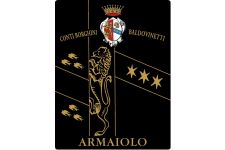
Tenimenti Conti Borghini Baldovinetti de Bacci
Tenimenti Conti Borghini Baldovinetti de Bacci
Biography
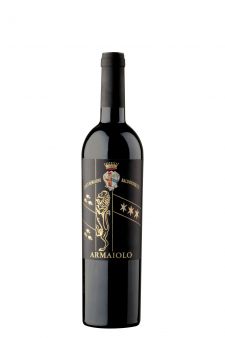
The historic estate of the Borghini Baldovinetti de’Bacci counts is located just a few miles away from the old walls of the city of Arezzo on the hills surrounding the city. The first document which demonstrates the presence of vineyards on the property goes back to 1416: the document treats the sale of a vineyard by Baccio de’Bacci to finance the decoration of the family chapel in the church of Saint Francis in Arezzo, a work carried out by Piero della Francesca. The estate itself was created as a wine-producing operation after World War II and expanded in the 1960’s to include bottling and marketing of estate wines. Today it extends over more than 2100 total acres, 500 planted to vineyards, on medium-consistence calcareous clay soils. The property is divided into three different units: San Fabiano, just a few miles from Arezzo, where the estate is also headquartered; Campriano, between the Casentino and Valdarno valleys, the site of the principal crus; and Poggio Oliveto at Montepulciano, with a technologically advanced cellar built in 2001, 75 acres of vineyards and a splendid exposition which produces an excellent Vino Nobile of the appellation. Among the estate wines is the San Fabiano Chianti. The finest Sangiovese, Canaiolo, Ciliegiolo, and Malvasia Nera grapes are hand picked into packing cases, and rapidly brought to the estate. The fermentation rigorously respects tradition and the appellation rules: after destemming and pressing the grapes ferment in temperature-controlled stainless steel tans at temperatures of 82° Fahrenheit; periodic pumping over of the cap continues for some days. A bright ruby red with aromas of red fruit and spices, it is intensely flavoured and very fresh, a fine match with white meat, roasts, soft and flavorful cheeses, and goat cheese. The top wine, however, is the Vinsanto I Cannicci del Conte. The grapes are hand picked, then dried to increase concentration of sugars and aromas. The grapes are pressed a few days before Christmas, fermented in small barrels, then aged in the barrels for at least four years. Amber in color, redolent of raisins and honey, it finishes with notes of candied fruit. A wine for sipping and for meditation.

